Installation Steps for biExport On-Premise
If you want to use biExport productively with an on-premise installation of the biExport service, these are the necessary configuration steps.
Software Requirements
The server, on which you install the biExport service, does not have to meet high system requirements. The basic requirements are:
- Windows Server OS
- 4 GB memory
- 2 core CPU
If you expect high productive usage, the number of CPU cores mainly drives performance. If exported PDFs contain a lot of pages with tabular data, it makes sense to think about a dedicated server with a GPU, in order to get the highest rendering performance. The export load can be distributed over several biExport service instances by the use of the biExport Load Balancer.
Installation
- Please register your user on www.biexcellence.com/register and tell us that you are interested in biExport for SAC. Also leave us a message that you would like to install the product on premise.
- After successful registration, you can find the downloads for your installation on www.biexcellence.com/downloads.
- Download the package biExport Widgets 4 SAC.
- Install the Widget as shown in this blog post.
- Download the package openbi Repository Server.
- Decompress the package and install it.
- Download the package biExport openbi Plugin Installer.
- Decompress the package and execute the EXE file.
- The Export openbi Plugin Installer automatically finds the open bi installation. Choose only SAC and start the installation.
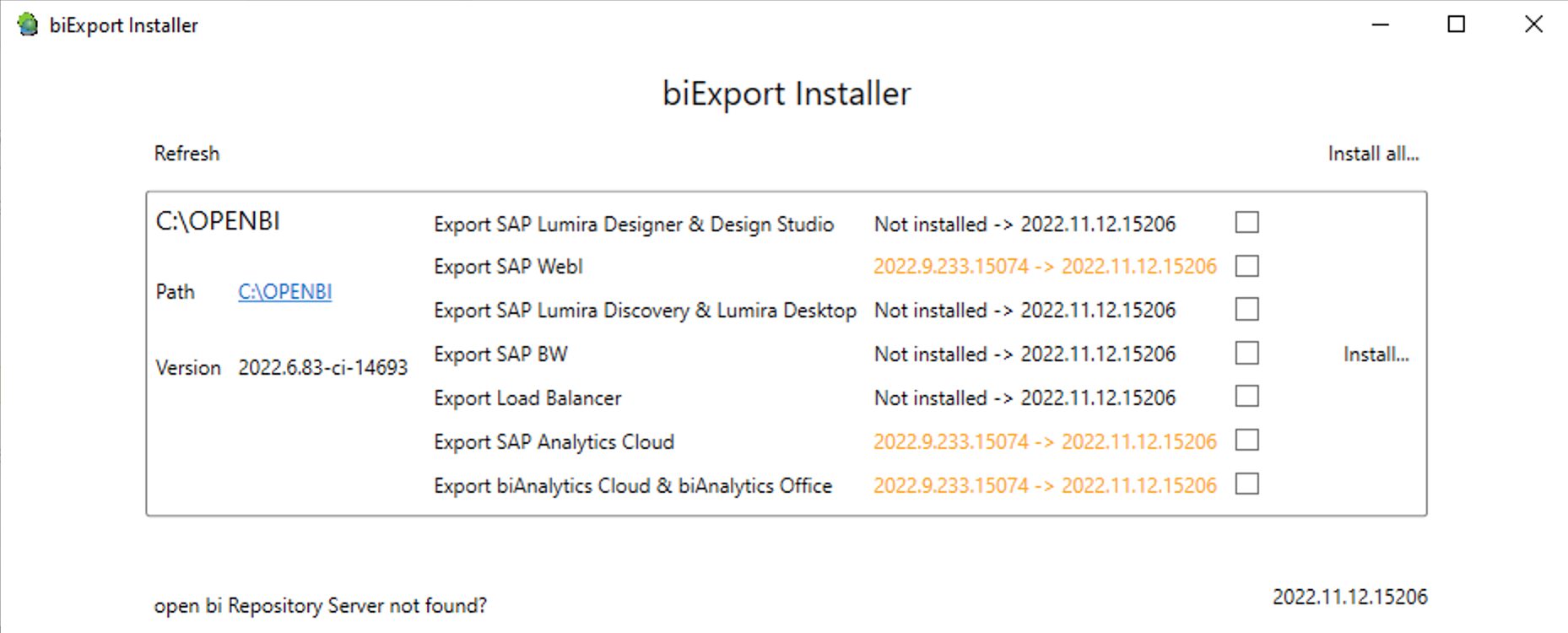
- Make sure the firewall does allow communication from and to the Export Service: Export Service uses the following ports by default:
9091 http 9092 https 9093 ConfigurationMake sure these ports are not yet used and opened. Otherwise change the default ports in the Web Configurator.
- Find the bi excellence openbi Repository service in the Windows Services and open it.

- Choose start automatically.
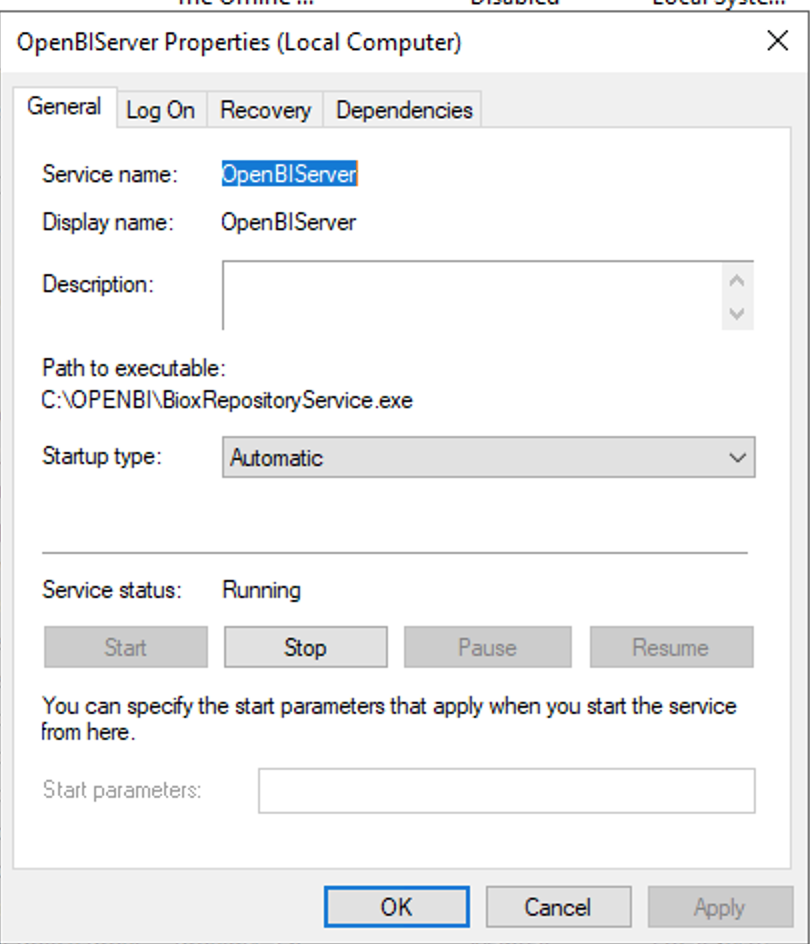
- If you are using live connections with SSO: We recommend to run the service with a user, who is authorized to access those Live Connections via SSO (for details read below).
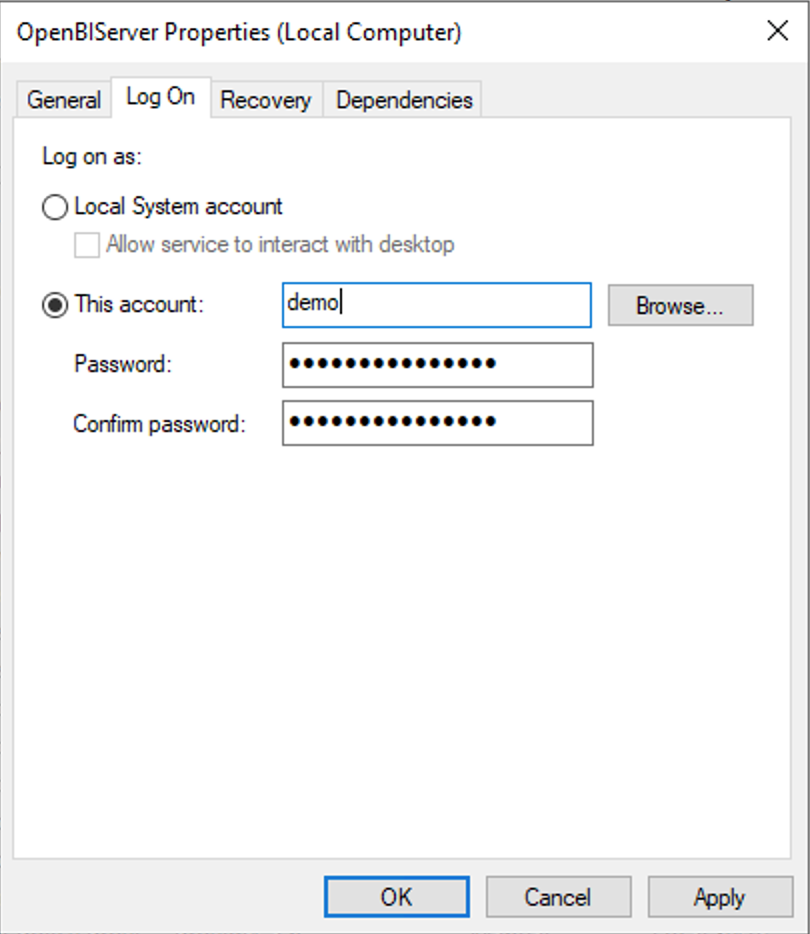
- Start the service.
Configuration
You can configure and monitor the biExort service via configurator.biexcellence.com.
- Login to your server
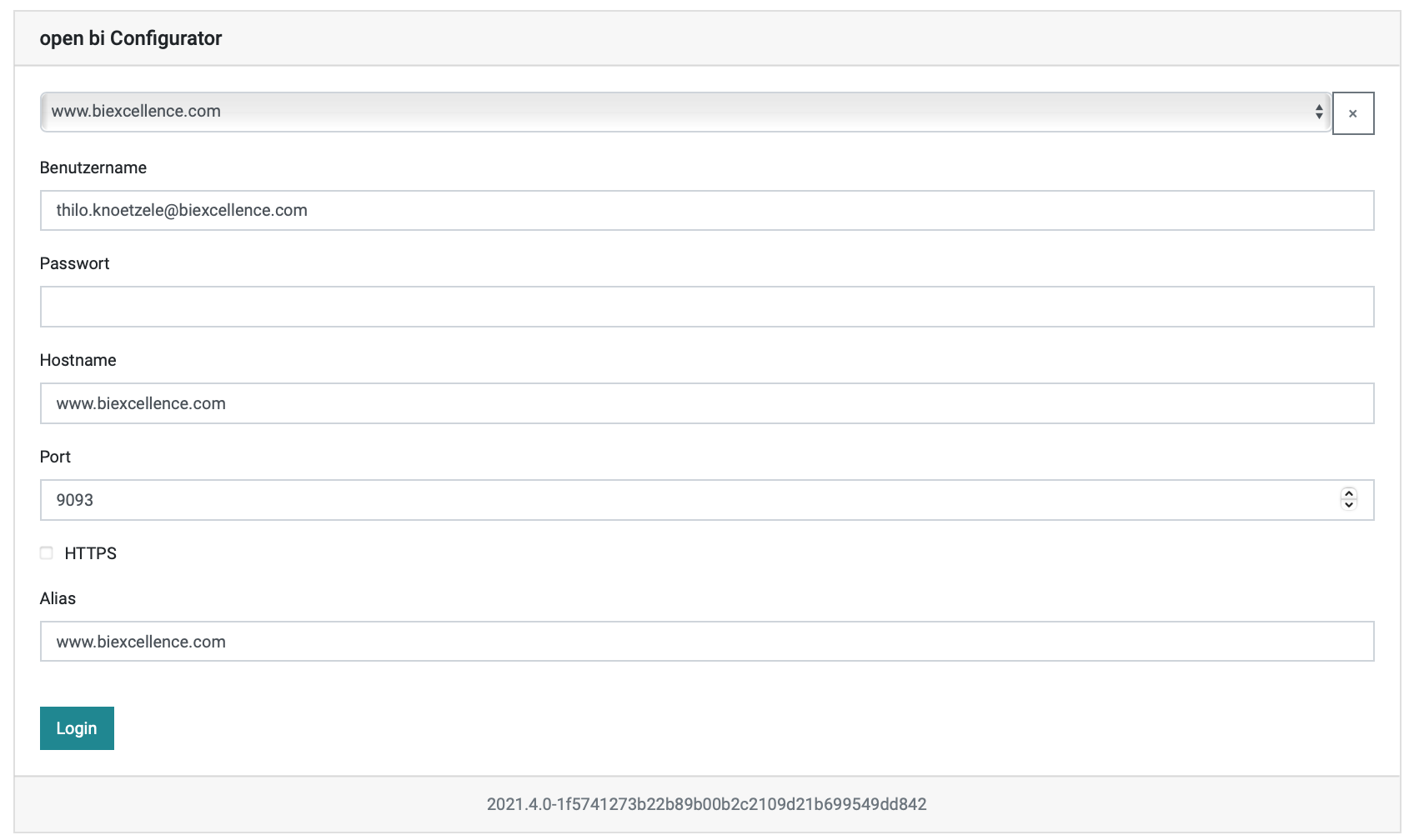 For the first login use user "admin" and password "Initial".
For the first login use user "admin" and password "Initial". - Navigate to Settings ...

... and add the following recommended parameter value for the tracing:
Name: EXPORT_TRACE on Productive Server: ERRORS on Development & Test: BASIC for Support Cases: X (stores all trace files in the export_temp subdirectory of OPENBI installation) - Activate https support
Open bi requires a PKCS#12/PFX (.pfx or .p12) server certificate, which includes any intermediate certificates and the private key in one encryptable file.
Commands to convert different certificate formats to PKCS#12/PFX using OpenSSL:
- Convert PEM to PFX:
$ openssl pkcs12 -export -out certificate.pfx -inkey privateKey.key -in certificate.crt -certfile CAcert.crt - Convert P7B to PFX:
$ openssl pkcs7 -print_certs -in certificate.p7b -out certificate.cer $ openssl pkcs12 -export -in certificate.cer -inkey privateKey.key -out certificate.pfx -certfile CACert.cerInstall the certificate to the Windows Certificate Manager. Use Local Machine as store location and Personal as certificate store on the machine where the open bi Repository Server is installed.
In the Web Configurator navigate to Settings and add parameter SSLPath. Set the parameter value to the Common Name (CN) of the certificate.

Open bi will search for the certificate in the certificate store.
After changing this setting the service must be restarted! - Convert PEM to PFX:
- In the Console you can always check what the service is currently doing:
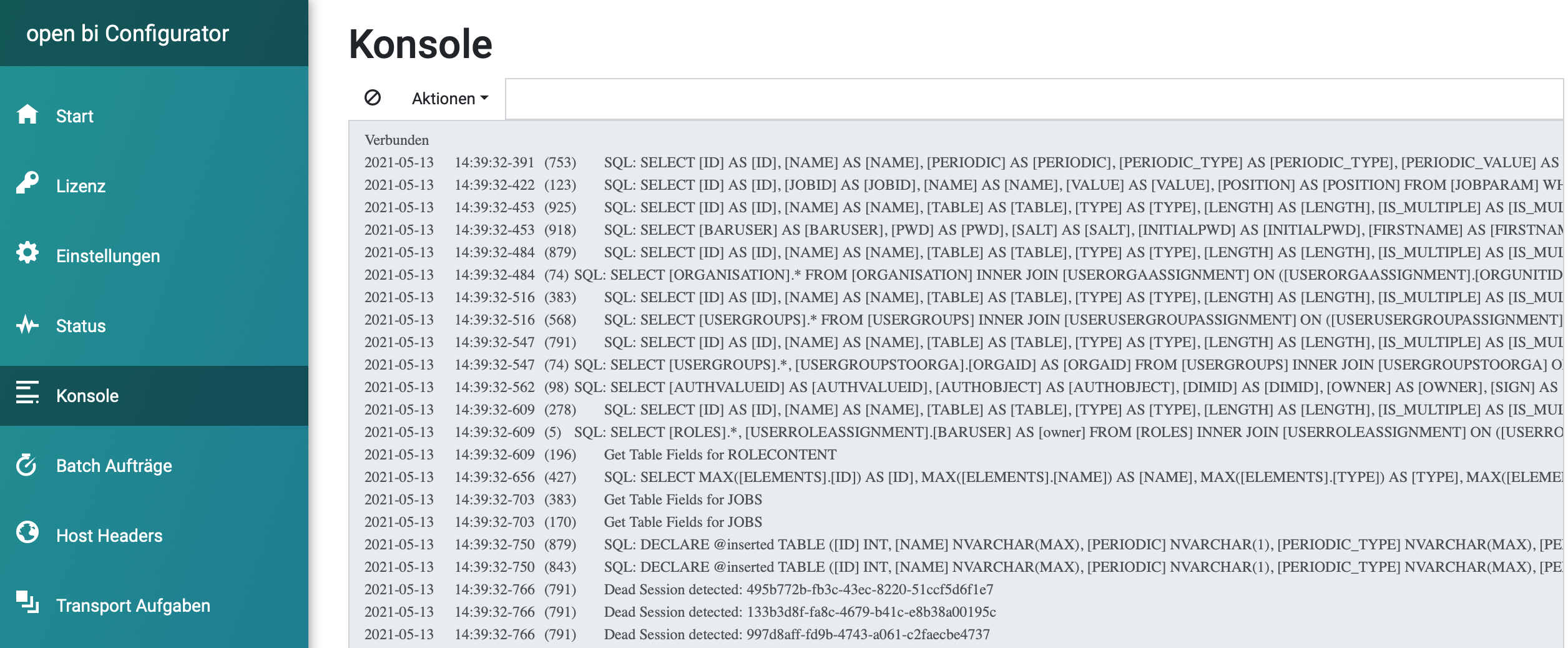
Test
Now the service should already be up and running. You can test it by executing the following services, which are provided by the service:
- Export Template Manager:
https://[your server URI]/export_resources/templatemanager.html - Scheduling:
https://[your server URI]/export_resources/sacscheduler.html - When adding the Widget to your SAC Application...

... set the Server URL to
https://[your server URI]and you can test the first export. The License Key does not have to be entered in this scenario.
For Briefing Book Generation, Scheduling and Background Execution
- Configure oAuth on SAC
This step is not required if you are using SSO for logging in to SAC and Live Connections. For import models and live connections with popup authentication, follow this blog post for configuration instructions.
- Determine SAC tenant URL
The Tenant URL is displayed in the Background Execution parameter group of the biExport Widget
Alternatively you can open an SAC application in your web browser and activate the developer tools (F12). Enter the following scrpt into the console and press enter:
sap.fpa.ui.infra.service.AjaxHelper.getTenantUrl(false);Note down the result.
- Create a Connection Template for re-login
Connection Templates are created in the Web configurator.
After logging in, navigate to "Connection Templates", choose "SAP BO"...
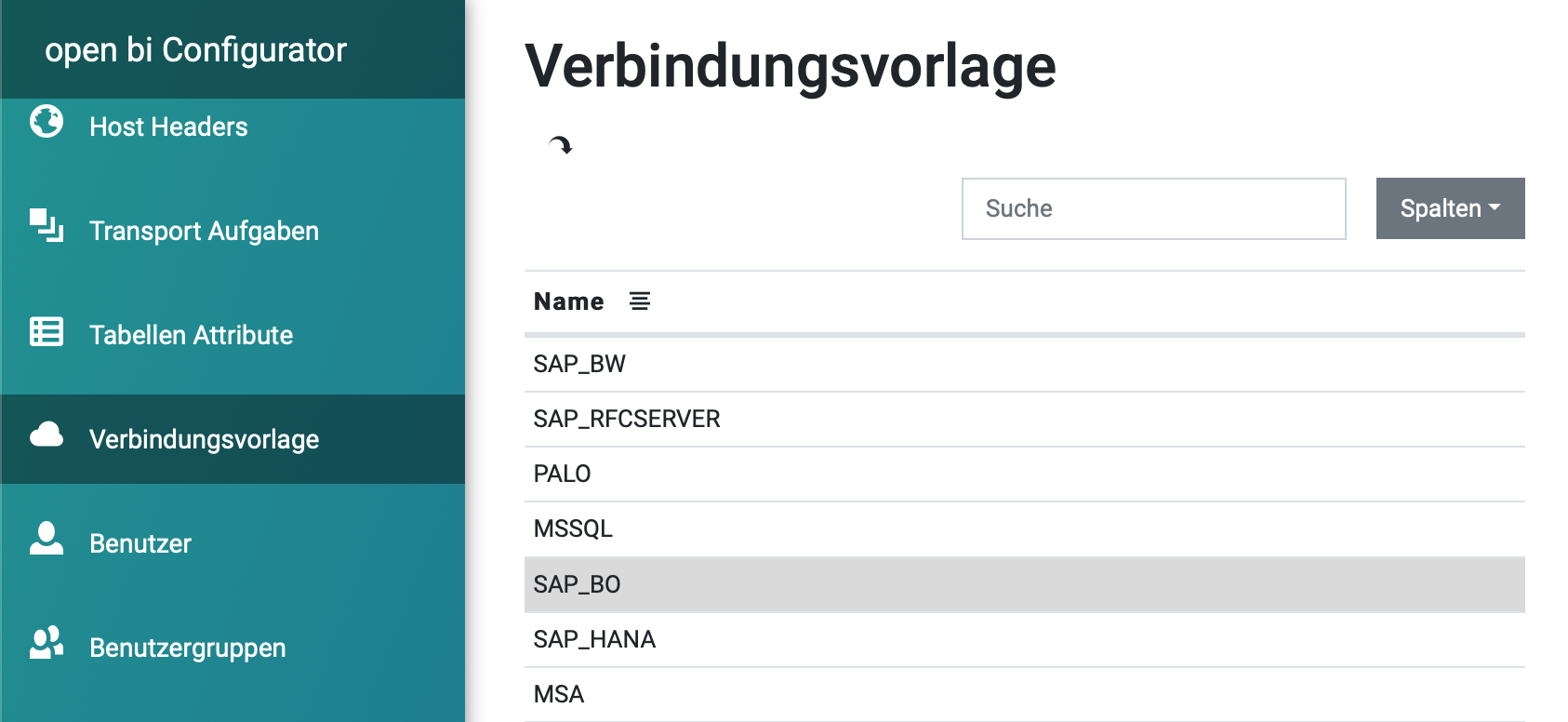
... and enter the following information:
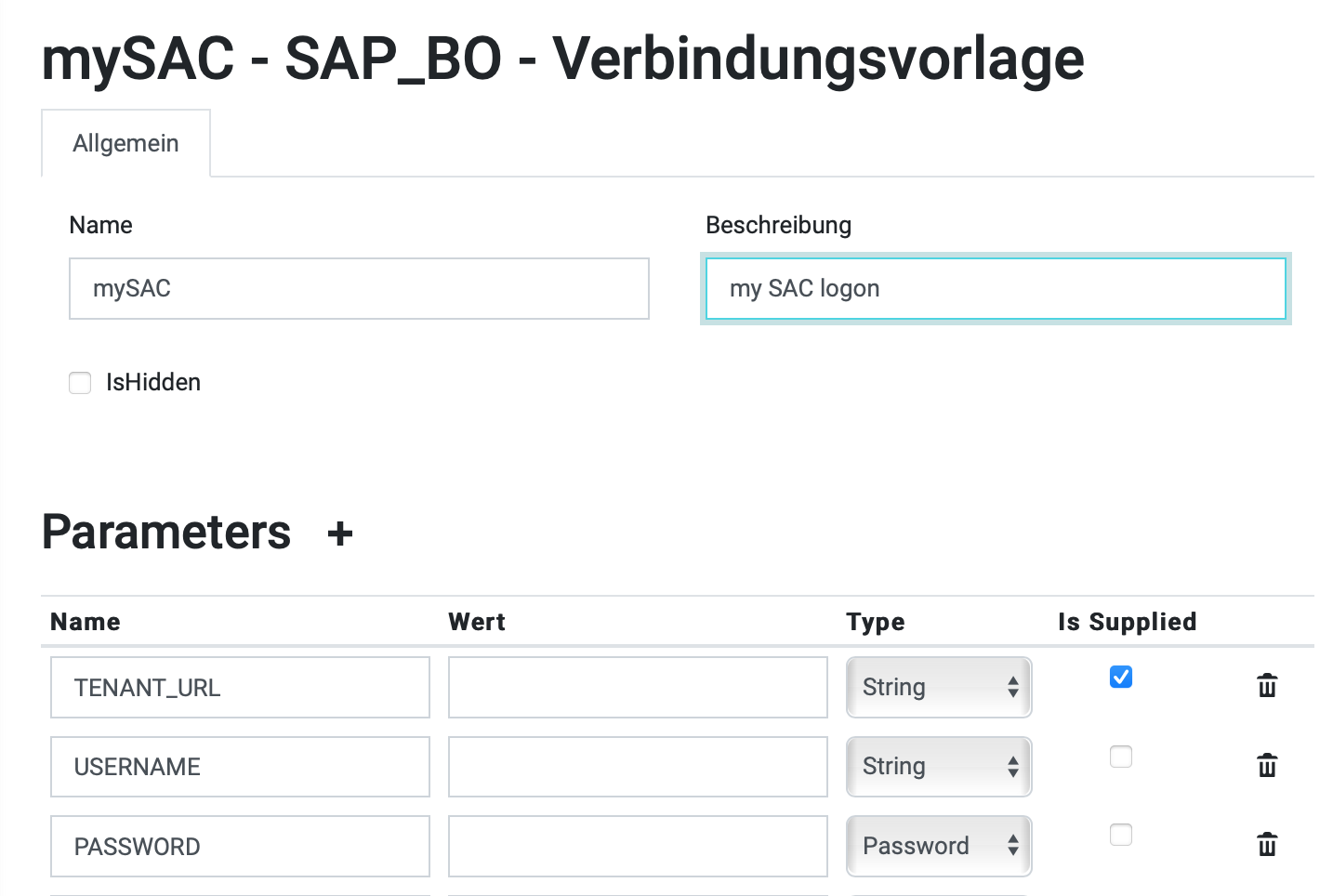
For import model scenarios / Live Connections:
For Live Connection scenarios with SSO:
For Mail delivery
If you want to connect to your SMTP server, create the following parameters in the Web configurator:
License
The evaluation license for the on premise installation is valid for 30 days.
Once you have successfully evaluated, you can start your license contract and we provide you with a license file that must be placed in the OPENBI installation folder.

Creation date: 13.05.2021
Category: Installation & Configuration
back to overview